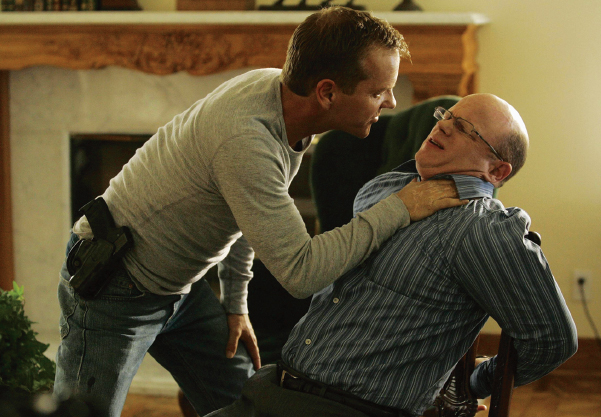MEDIA LITERACY: What to Do about Television Violence?
Printed Page 482
MEDIA LITERACY
Case Study

What to Do about Television Violence?
The debate over violent television programming is almost as old as television, with the first congressional hearings on the matter occurring in 1952. More than a half-century later, the debate continues. In 2007, the FCC released a lengthy report, “Violent Television Programming and Its Impact on Children,” and recommended action to address violent programming.
The commission agreed with research that suggests “exposure to violence in the media can increase aggressive behavior in children, at least in the short term.” Yet as the report tried to make conclusive statements about violent programming, it raised only more questions about what to do. The FCC cited several troubling statistics:
- An average American household has the television set turned on eight hours, eleven minutes, daily.
- Children watch on average between two and four hours of television every day.
- Depending on their age, one- to two-thirds of children have televisions in their bedrooms.
- By the time most children begin the first grade, they will have spent the equivalent of three school years in front of the television set.
- By the time the average child is eighteen years old, he or she will have watched more than ten thousand hours of television.
- By age eighteen, an American child will have seen upwards of 15,000 simulated murders and about 200,000 acts of violence on television.1
But dealing with television violence has been persistently confounded by several problems. First is the problem of defining violent content, at least in a way that could be used in government policies. Courts have struck down vague definitions that call for regulating excessive violence, noting that many classic stories from the Bible, Greek mythology, and fairy tales are filled with gruesome violence.
A second problem is determining which television programming to regulate. Most proposals include prime-time programming, but what about news, sports, commercials, and promotional announcements? And how should regulations treat cable and satellite television providers, who aren’t subject to the same level of FCC oversight as broadcasters? Third is the issue of free speech. Courts have ruled that the First Amendment protects depictions of violence and violent speech. Although broadcasters have less First Amendment protection than other mass media and are subject to daytime restrictions on indecent content to protect children, it is not clear that similar rules could be applied to violent content.
Fourth, although a majority of Americans think there is too much violence on television, nearly all parties have fallen short in using existing tools to deal with it. The FCC charged that broadcast networks are inconsistent in how they voluntarily rate and label programs for violent content, and often “underlabel” programs with less restrictive ratings to increase advertiser incentives. Although the ratings have been around since 1997, many parents don’t understand them. One in five parents has never heard of the ratings system, and only 8 percent can correctly identify the categories. The V-chip, much touted when it became a television set standard in 2000 to enable parents to block violent programming, is rarely used, and not all parents are aware of blocking features on newer digital sets. Moreover, changing viewing habits, with shows often available via DVR, streaming video, and iTunes, among others, makes programming more difficult to track or control.
Finally, for all of the research suggesting that TV violence causes violent behavior, there are still significant questions that such effects even exist. Although the FCC sided with effects researchers, the report also noted that controlled laboratory environments and experimental measures of aggression (e.g., hitting dolls, “killing” characters in video games) can’t be generalized to the real world and that there is—at least as yet—no demonstrable correlation between media violence and crime statistics.
APPLYING THE CRITICAL PROCESS
DESCRIPTION Keep track of your TV viewing habits in one week. Devise a chart and create categories for the types of shows you watch (e.g., sitcoms, dramas, reality programs).
ANALYSIS Take note of the content in each program—what topics are covered, and whether or not there is violence. What shows seem to feature more violence than others? How much violence do you find overall?
INTERPRETATION What do your findings mean? Are you surprised by the appearance of violence in any seemingly nonviolent shows? Do broadcast network shows (e.g., ABC, CBS, NBC, Fox, CW) feature more, similar amounts of, or less violent programming than cable or satellite television shows?
EVALUATION How does exposure to violence in these shows affect you? Do you agree with the FCC statement that “exposure to violence in the media can increase aggressive behavior in children, at least in the short term”? Why or why not?
ENGAGEMENT Aside from TV shows, examine other forms of entertainment that you enjoy, such as your collection of movies or video games, for the presence of violent content. Are the rating systems for these products effective? File your comments or concerns online with the FCC (www.fcc.gov).